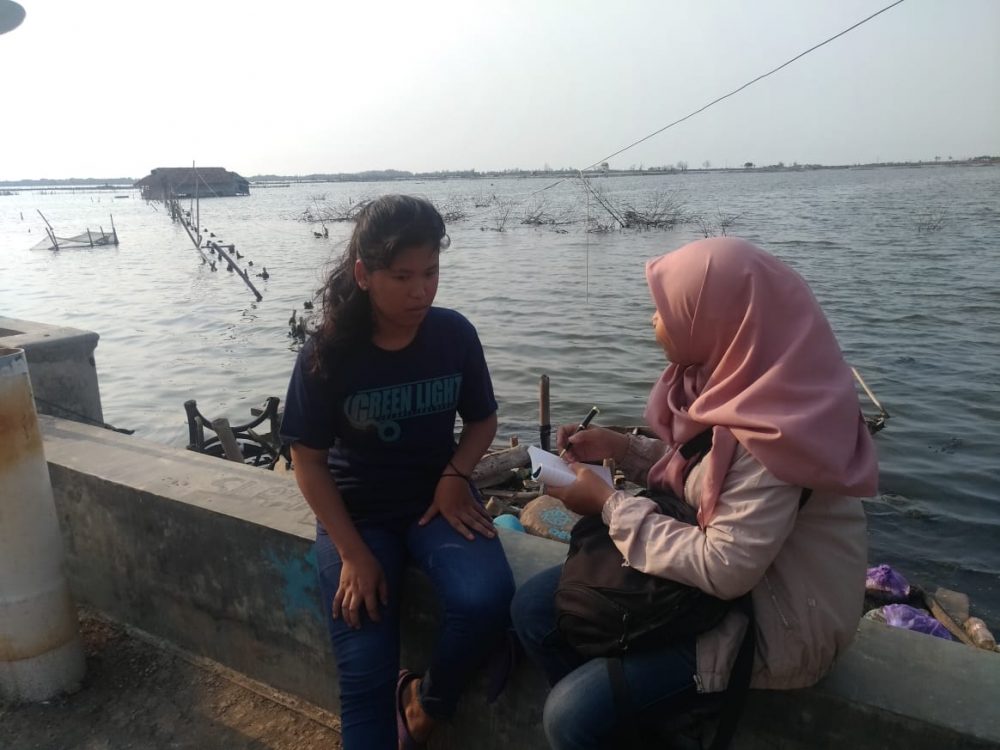Gender research in Pakistan, India, Indonesia, and the Philippines underlines barriers women face both as journalists and sources for the media.
In December 2020, Internews’ Earth Journalism Network (EJN), a global network of environmental journalists network and implementer of media development activities, began a research project to determine how journalists in Asia who have received grant support and mentorship from EJN include women in their reporting, or fail to do so.
EJN worked with researchers in four countries – Pakistan, India, Indonesia and the Philippines – to assess how reporters think about gender and what kind of barriers they face when seeking to include women’s voices in their stories. Further, how do social and cultural views of women create challenges to inclusion?
Researchers conducted dozens of interviews with journalists and experts about the barriers women face, both as journalists and as sources for the media.
A few of the report’s key findings:
- Women are often seen as “less credible” sources than men.
- When pressed for time, journalists often don’t feel they can put in the effort to seek out new sources, returning to the same male-dominated lists.
- Women journalists face safety concerns that can make field reporting more challenging.
- Men still hold most leadership positions in newsrooms, leading to less awareness of the absence of women’s voices and/or a lack of support for reporters seeking to include women more.
- A pay gap remains between men and women journalists.
- There are often fewer prominent women experts, particularly in environmental fields or in high-level government positions.
- One common thread through all four countries was the role social and cultural norms play in terms of where women can go and who they can speak to, both as journalists and as sources.
A related report on women’s under-representation in the media, funded by the Bill and Melinda Gates Foundation in 2020, studied the news landscape in six countries and concluded: “News is produced mainly by men, featuring more men and is consumed by more men.”
In India, EJN’s researchers learned from journalists how difficult it can be to find women experts in certain niche fields because women have historically been excluded from higher education. Other interviewees mentioned that women experts often must ask a supervisor for permission to speak and that traditional or generational wisdom, much of which is held by women, is not considered expertise. Another Indian interviewee, freelance journalist Aparna Karthikeyan, summed it up well: “I can’t sit in a bar like a man, I can’t walk into a panchayat [local government] meeting like a man.”
The Gates’ Foundation’s “Missing Perspectives of Women in News” found only 14% of sources quoted in online news stories in India were women. (In the United Kingdom, which was the most gender inclusive of the six countries they considered, it was just 29%.)
EJN’s report revealed journalists in Indonesia shared similar difficulties. Journalists struggle to find women leaders or experts to interview when reporting on forestry or mining issues in remote regions of the country. When they do interview women, it’s often as victims or members of affected communities, rather than as expert sources. One journalist, Tessa Toumbourou, highlighted the same challenge her Indian peers faced: “I know that women in the villages have a lot of experience and wisdom when it comes to dealing with environmental issues … However, their voices are not heard.”
In Pakistan, this challenge was found to come into play as well. Two journalists, both men, reported to EJN that they find it difficult to interview women in remote areas of the country because of societal norms that discourage women from speaking to strangers. In both Hindu and Muslim communities in the country, women observe purdah – seclusion from strangers and/or men – in different ways. Some may cover up entirely around strangers of any gender, while others may show their faces to unknown women but not men. Navigating these differences, especially when on deadline, can be a considerable challenge.
In the Philippines, the journalists interviewed once again cited difficulties finding women experts as a major obstacle to including more women sources in their stories. One journalist, Leilani Chavez, noted that men tend to respond quicker to her interview requests than women: “Women sources have more clarifications and considerations before they agree to interviews. They want to make sure they are the right person to be quoted.”
Overall, the report reiterates that more work needs to be done to advance gender equality in the media and presents a dozen recommendations for how EJN and other organizations can support journalists in making their work more gender balanced. Here are just a few:
- Create databases of women experts by country and field.
- Support gender sensitivity and awareness trainings for journalists and editors to increase the number of women quoted and the number of high-ranking women journalists in newsrooms.
- Support media engagement trainings that focus on ways to make women sources feel more comfortable interacting with journalists.
- Train journalists and media outlets on the ‘expertise gap,’ to recognize the value of traditional and/or generational wisdom as a form of legitimate expertise.
The findings expand upon a pilot study EJN conducted as part of Reflect Reality, a methodology Internews launched in 2019 to increase women’s visibility in the news media.
EJN will continue to support journalists in our network to include more women’s voices in their reporting and expand our efforts to help women journalists stay safe and advance in their careers despite the barriers they face.
This program update was first published on Internews’ Earth Journalism Network website on 20 January 2022. Download the full report.
To read more about Reflect Reality, Internews’ methodology for increasing women’s visibility in the news media, go to their website.
